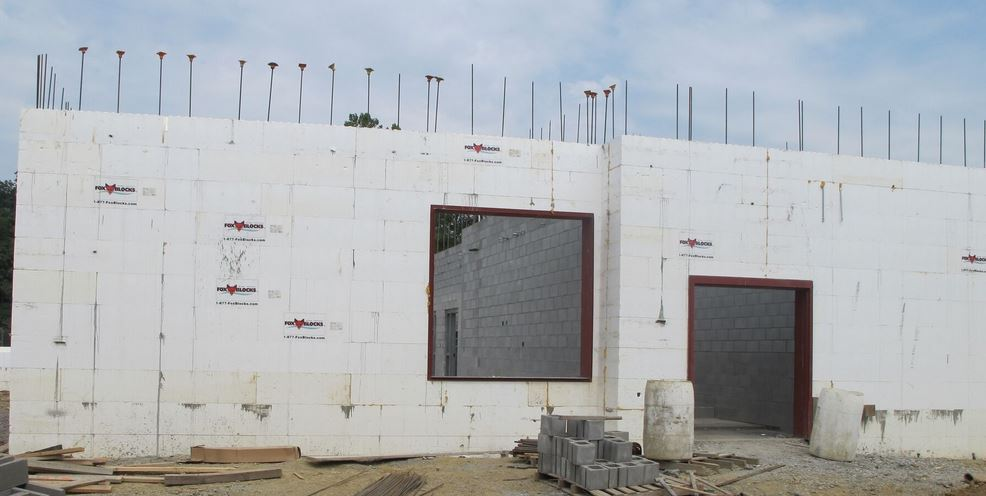
Understanding ICC 500 Storm Shelter Requirements and the Best Materials to Utilize

Hurricanes and tornadoes can be horrifying examples of nature’s power. The U.S. averages 1,253 tornadoes each year. If you live in an area that is prone to this type of weather event, you need a safe place for you and your family to ride out the storm.
Storm shelters can provide much needed safety during these terrifying moments. Tornadoes are capable of wind speeds of 200 mph or more, so structures have to be built to very strict requirements in order to keep people safe. So how can you make sure your storm shelter will be up to the test if you ever really need it? That’s where ICC 500 ratings come in.

What is ICC 500?
Building codes typically adopt codes and standards written by specialized agencies and organizations with expertise in certain areas. The International Code Council (ICC) and the National Storm Shelter Association (NSSA) worked together to develop the ICC/NSSA Standard for the Design and Construction of Storm Shelters (ICC 500).
The purpose of this standard is to codify the design and construction requirements of tornado and hurricane storm shelters. With this code, engineers and building designers have a base set of requirements to refer to when designing storm shelters. By outlining these base requirements, the general public can rest assured that storm shelters that meet the ICC 500 requirement will be safe and do the job.
What Structures Need to Comply with ICC 500?
Both residential and community storm shelters have to comply with ICC 500. Residential storm shelters are located within homes and can serve no more than 16 people. Community storm shelters are much bigger and are often intended for use by the general public.
Some buildings are required to be built to ICC 500 standards. Some examples are:
K-12 school buildings
Police stations
911 call stations
Emergency operations centers
Fire, rescue, and ambulance stations

How Strong is an ICC 500 Rated Structure?
A storm shelter with an ICC 500 rating is expected to be able to save lives during the most devastating conditions. This is no easy task, so the testing and requirements are rigorous. Since wind speed is often the main driver of damage, ICC 500 requires structures to be resilient to high winds.
A storm shelter must have a continuous load path and resistance to windborne debris, overturning, and uplift. The entire structure envelope must meet the ICC 500 requirements to ensure there are no weak points. The Wind Test and the Missle Test are two of the main tests for ICC 500 that make sure a design and materials can pass. It’s also important to note that not every structure is tested, but the methods and materials are tested and approved for use in other designs.
The Wind Test
An ICC 500 rated structure must be designed to resist 250 mph winds. The storm shelter must also resist the impact of air pressure cycling. The requirements for this test are outlined in the ASTM E1886-19. By outlining the requirements so carefully, buildings and materials that pass these tests can be assured safe.
The Missle Test
Flying debris tends to be the leading cause of death during a severe weather event. For a storm shelter to keep its occupants safe, it has to be able to take a beating. To pass the missile test, the wall of the storm shelter must withstand debris impact of a 15-pound, 2-inch by 4-inch shot moving at 100 mph. The roof is also tested to withstand the impact of a 15-pound, 2-inch by 4-inch shot moving at 67 mph.

What Materials Should Storm Shelters Use?
One of the key requirements of a storm shelter is that the structure has a strong continuous load path. This means that the roof, walls, and foundation are all connected in such a way that they all support each other and move the load appropriately.
Insulated concrete forms with steel rebar reinforcement are particularly suited to this task. By anchoring the ICF blocks to the foundation and tying the structure all together with rebar, ICF block construction does a fantastic job of distributing forces no matter how they are applied to the structure. Concrete provides incredible strength in compression, steel provides power in tension, and the entire block is resistant to impact damage, making storm shelters made with steel-reinforced ICF blocks a cut above any other construction method.

Are Fox Blocks ICFs ICC 500 Rated?
Absolutely! To earn their ICC 500 rating, Fox Blocks had to pass a battery of tests to prove their strength and durability. These tests included an ICC 500 missile test that Fox Blocks passed with flying colors. When used with an efficient rebar layout, Fox Blocks are FEMA P-361 and ICC 500-2020 compliant. Residential storm shelters built with Fox Blocks meet, and often exceed, the criteria for a FEMA residential safe room designed for impact resistance and a continuous load path.
Make Your Storm Shelter Fox Blocks Strong
Don’t worry about whether your ICC 500 rated storm shelter will be up to the task. Use Fox Blocks for your construction and then you know you’ll be protected. To learn more about ICC 500 requirements and how Fox Blocks can be used in storm shelters, reach out to their experts today.